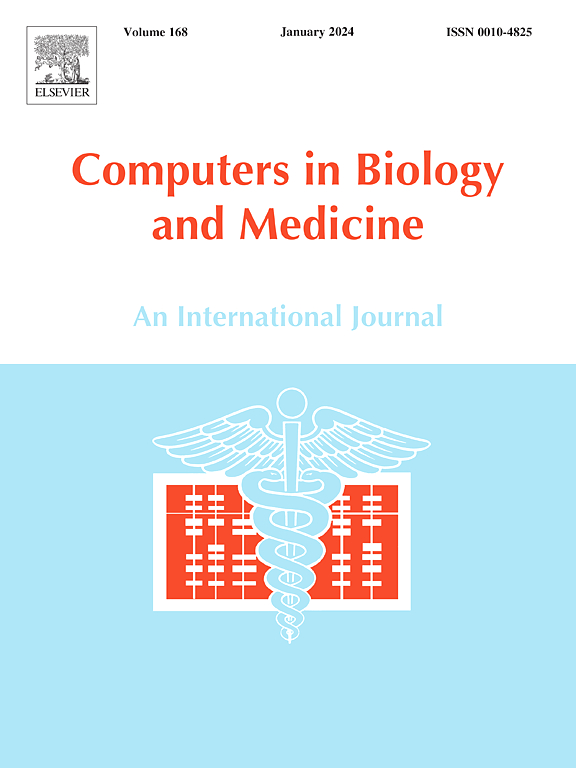Machine learning-assisted tacrolimus dose optimization in childhood- onset systemic lupus erythematosus through population pharmacokinetic modeling
IF 7
2区 医学
Q1 BIOLOGY
引用次数: 0
Abstract
Objective
This study aimed to improve treatment effectiveness in childhood-onset systemic lupus erythematosus (cSLE) by developing machine learning algorithms integrated with pharmacokinetic parameters to predict individualized tacrolimus dosing for optimized therapy.
Methods
Data from 480 trough tacrolimus concentrations in 86 cSLE patients over five years were analyzed. A nonlinear mixed-effects model was constructed to characterize the pharmacokinetics of tacrolimus. We screened 27 machine learning and deep learning models using 29 clinical variables to select the best-performing individualized dose prediction model. To further enhance prediction accuracy, the pharmacokinetic parameters were subsequently embedded within the optimized model. Model performance was assessed through the utilization of goodness-of-fit plots and diagnostic parameters such as objective function values and Shapley Additive exPlanations (SHAP) values.
Results
The pharmacokinetic profile of tacrolimus was best accurately characterized by a one-compartment model, which incorporated first-order kinetics for both absorption and elimination processes. The typical estimates for apparent clearance (CL/F) and volume of distribution (V/F) were 3.52 L/h/70 kg and 124.84 L/70 kg, respectively. Among the 27 machine learning models, the XGBoost algorithm demonstrated the best prediction accuracy for tacrolimus dose (R2 = 0.74, mean absolute error [MAE] = 0.016, mean square error [MSE] = 0.0005). After incorporating 11 key variables, including pharmacokinetic parameters (CL/F and V/F), into the model and performing hyperparameter turning, prediction accuracy significantly enhanced (R2 = 0.80, MAE = 0.013, MSE = 0.0004). Two cSLE patients who received model-predicted doses achieved disease activity indexes ≤4 after treatment.
Conclusion
This study successfully developed an accurate machine learning-based model for predicting individualized tacrolimus dosing in cSLE patients. The integration of pharmacokinetic parameters significantly enhanced the model's accuracy, improving dosing precision and reducing overexposure, thus enhancing therapeutic efficacy.
通过群体药代动力学模型,机器学习辅助他克莫司对儿童期系统性红斑狼疮的剂量优化
目的本研究旨在通过开发结合药代动力学参数的机器学习算法来预测个体化他克莫司剂量以优化治疗,从而提高儿童期系统性红斑狼疮(cSLE)的治疗效果。方法对86例cSLE患者5年480例他克莫司浓度数据进行分析。建立非线性混合效应模型表征他克莫司的药代动力学。我们使用29个临床变量筛选27个机器学习和深度学习模型,以选择表现最佳的个体化剂量预测模型。为了进一步提高预测精度,随后将药代动力学参数嵌入优化模型。通过利用拟合优度图和诊断参数(如目标函数值和Shapley加性解释(SHAP)值)评估模型性能。结果他克莫司的药动学特征最准确地表征为单室模型,该模型包含了吸收和消除过程的一级动力学。典型的表观清除率(CL/F)和分布体积(V/F)分别为3.52 L/h/70 kg和124.84 L/70 kg。在27个机器学习模型中,XGBoost算法对他克莫司剂量的预测准确率最高(R2 = 0.74,平均绝对误差[MAE] = 0.016,均方误差[MSE] = 0.0005)。将药代动力学参数(CL/F、V/F)等11个关键变量纳入模型并进行超参数转换后,预测准确率显著提高(R2 = 0.80, MAE = 0.013, MSE = 0.0004)。2例接受模型预测剂量的cSLE患者治疗后疾病活动性指数≤4。结论本研究成功建立了一种基于机器学习的准确预测cSLE患者个体化他克莫司剂量的模型。药代动力学参数的整合显著提高了模型的准确性,提高了给药精度,减少了过度暴露,从而提高了治疗效果。
本文章由计算机程序翻译,如有差异,请以英文原文为准。
求助全文
约1分钟内获得全文
求助全文
来源期刊

Computers in biology and medicine
工程技术-工程:生物医学
CiteScore
11.70
自引率
10.40%
发文量
1086
审稿时长
74 days
期刊介绍:
Computers in Biology and Medicine is an international forum for sharing groundbreaking advancements in the use of computers in bioscience and medicine. This journal serves as a medium for communicating essential research, instruction, ideas, and information regarding the rapidly evolving field of computer applications in these domains. By encouraging the exchange of knowledge, we aim to facilitate progress and innovation in the utilization of computers in biology and medicine.
 求助内容:
求助内容: 应助结果提醒方式:
应助结果提醒方式:


